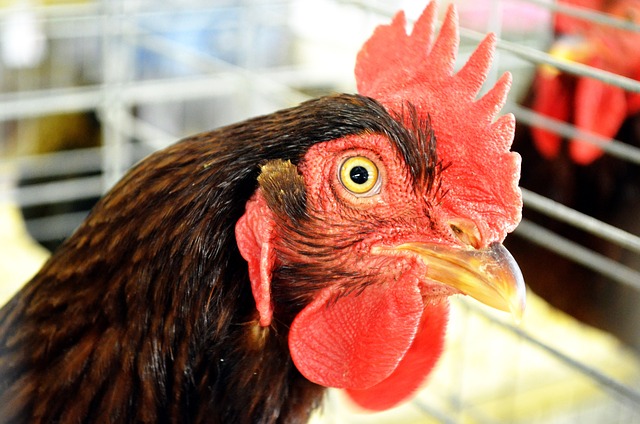
McDonald’s Move to Cage-Free Eggs Is a Tipping Point for the Industry
Will the next egg you crack come from a chicken raised in a roomier barn?
Foodies and farmers are in unusual agreement on the answer: If not now, then soon enough.
Both say McDonald's recent decision to transition to "cage free" eggs for its McMuffins and other menu items was a tipping point in the $9-billion egg industry, which still produces 96% of its eggs in barns full of stacked wire cages.
September 29, 2015 | Source: Los Angeles Times | by Geoffrey MohanGeoffrey Mohan
Will the next egg you crack come from a chicken raised in a roomier barn?
Foodies and farmers are in unusual agreement on the answer: If not now, then soon enough.
Both say McDonald’s recent decision to transition to “cage free” eggs for its McMuffins and other menu items was a tipping point in the $9-billion egg industry, which still produces 96% of its eggs in barns full of stacked wire cages.
It will be increasingly hard to ignore a buyer of 2 billion eggs, especially given that McDonald’s joined a flock of companies that already made similar supply-line switches — including the top three cafeteria service companies, and fast-food competitors Burger King, Dunkin’ Donuts and Starbucks.
Since California passed a measure requiring more space for egg-laying hens in 2008, Washington, Oregon, Arizona, Michigan and Ohio have enacted laws regulating hen housing, while activists in Massachusetts have launched a similar measure aimed at the 2016 presidential ballot.
“The McDonald’s announcement really settles the debate as to whether there will be a future for cage confinement in the egg industry — the answer is no, there won’t be,” said Paul Shapiro, vice president of farm animal protection for the Humane Society of the U.S. “How quickly that will happen is now the real question.”
Ken Klippen, head of the National Assn. of Egg Farmers, agrees, but isn’t exactly applauding the McDonald’s decision. He penned an open letter to the company, challenging its assertion that it’s more humane to give chickens more room, and reminding them that more manure may come into contact with eggs laid by hens that have access to floors.
“I agree. This is a tipping point,” Klippen said. “The egg farmers do want to respond to this because there is a segment of us that disagree with the merits behind that decision.”
Glenn Hickman, though, isn’t waiting to debate the merits. The Arizona-based egg producer, an indirect supplier to McDonald’s, responded to the announcement with plans to build a modern, 2-million-hen facility. Hickman, like other West Coast producers already in the California market, has been moving toward roomier enclosures since Proposition 2 passed in November 2008.
California’s Proposition 2, which took full effect in January, doesn’t stipulate enclosure sizes. It requires that hens have the ability to turn around freely, lie down, stand up and fully extend their limbs. The state Department of Food and Agriculture has since issued a rule requiring about 116 square inches per bird.
A 2010 law effectively expanded Proposition 2 to apply to all shell eggs sold in the state, which consumes roughly twice as many eggs as it produces.
Before the law passed, Hickman housed several million chickens in the stacked wire enclosures known as battery cages, which leave each bird with less space than a sheet of photocopy paper.
By December, 4 million of his projected 10 million laying hens will live in more spacious “enriched” enclosures with amenities such as perches, scratch areas and private areas to lay eggs. About 200,000 already are being raised organically in cage-free facilities, he said.
“When it comes to harvesting an egg, whether the chicken can fly up or down or scratch or perch really doesn’t upset the production of the egg,” Hickman said. “As long as we can convince the consumer that those things cost a little bit extra but they’re worth it — and we can sell the eggs for a profit — we’re happy to do so.”
